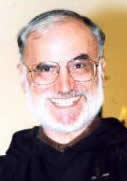There is something that the three readings have in common this Sunday: In each one a birth is spoken of: "Behold the Virgin will conceive and will give birth to a son and he shall be called Emmanuel, God-with-us" (first reading); "Jesus Christ ... was born from the line of David according to the flesh" (second reading); "This is how the birth of Jesus Christ came about ..." (Gospel). We could call it the "Sunday of births!"
We cannot avoid immediately asking: Why are so few children born in Italy and other Western countries? The principal reason for the scarcity does not have to do with economic factors. From an economic point of view, the births should increase as we move up through the levels of society, or as we move from the global South to the global North; but we know that the contrary is true.
The reason is deeper: It is the lack of hope, and the lack of what hope brings with it, namely, confidence in the future, vital drive, creativity, poetry and joie de vivre. If you wed, it is always an act of faith; bringing a child into the world is always an act of hope. Nothing can be done in the world without hope. We need hope like we need oxygen to breathe. When someone is about to faint we say, "Give them something strong to help them breathe." Something similar should be done for a person who is about to let themselves go, to give up on life: "Give them a reason for hope!" When hope is reborn in a human situation, everything looks different, even if nothing in fact has changed. Hope is a primordial force. It literally works miracles.
The Gospel has something essential to offer our people in this moment of history: Hope with a capital "H," the theological virtue that has God himself as its author and guarantee. Earthly hopes -- home, employment, health, successful children, etc. -- even if they are realized, will inexorably delude us if there is not something deeper that supports them and keeps them going. Consider what goes into the making of a spider web. The spider web is a work of art. It is perfect in symmetry, elascticity, functionality. The threads that stretch out horizontally on all sides make it taut. But it is held upright in its center by a thread that comes down from above, the thread that the spider had spun to lower itself down. If one of the threads on the side breaks, then the spider repairs it. But if you break the thread that comes from above down to the center, everything is destroyed. The spider knows that there is nothing it can do and goes away. In our lives the theological virtue of Hope is the thread from above, that which sustains the whole plot of our lives.
In this moment in which we feel the need for hope so strongly, the feast of Christmas can be the occasion for us to change our tendencies. Let us recall what Jesus said one day: "He who welcomes a child in my name welcomes me." This also holds for whoever welcomes a poor and abandoned child, for whoever adopts and feeds a child of the Third World; but it holds above all for two Christian parents who, loving each other, in faith and hope, open themselves to a new life. Many couples who are lost in joy at the moment the pregnancy announces itself are certain to then make their own the words of Isaiah's Christmas prophecy: "You have spread joy, you have made happiness increase, because a child is born for us, a son is given us!"
[Translation by Joseph G. Trabbic]

Fr.
Raniero Cantalamessa is a Franciscan
Capuchin Catholic Priest. Born in Ascoli Piceno,
Italy, 22 July 1934, ordained priest in 1958.
Divinity Doctor and Doctor in classical literature.
In 1980 he was appointed by Pope John Paul II
Preacher to the Papal Household in which capacity he
still serves, preaching a weekly sermon in Advent
and Lent.
